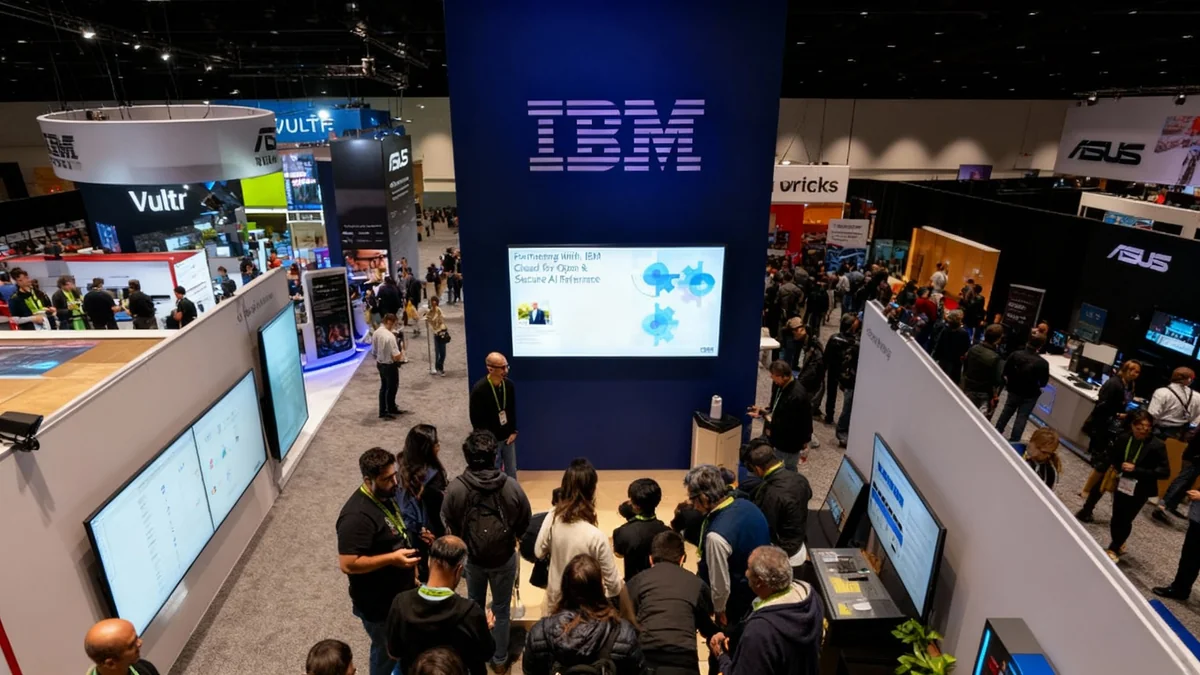International Business Machines Corp. (IBM) has announced plans to reduce its global workforce by thousands as it intensifies its focus on artificial intelligence. The technology giant confirmed the move, framing it as a strategic realignment toward higher-growth areas like AI consulting and software development.
The company stated the job cuts will affect a "low-single-digit percentage" of its total staff. Based on its year-end employee count of 270,000, this could impact between 2,700 and 8,100 positions worldwide. This restructuring underscores a significant trend in the tech industry, where companies are reallocating resources to capitalize on the AI boom.
Key Takeaways
- IBM is reducing its global workforce to shift resources toward artificial intelligence.
- The cuts will impact a "low-single-digit percentage" of its 270,000 employees.
- The company expects its total number of U.S. employees to remain flat despite the restructuring.
- This move is part of a long-term strategy IBM calls "workforce rebalancing."
A Strategic Shift Toward Artificial Intelligence
IBM's decision is not an isolated event but part of a broader corporate strategy to pivot away from legacy businesses and double down on emerging technologies. The company has identified artificial intelligence as a primary engine for future growth, particularly in enterprise consulting and advanced software solutions.
In a statement, the company emphasized that the workforce changes are necessary to align its talent with current market demands. The focus is on building a team with skills in AI, cloud computing, and other high-demand sectors. This involves both hiring new talent with specialized expertise and retraining existing employees, alongside the planned reductions.
By the Numbers
- Global Workforce: 270,000 employees at the end of last year.
- Projected Cuts: A "low-single-digit percentage," potentially affecting up to 8,100 jobs.
- U.S. Workforce: Expected to remain stable despite some internal shifts.
The move reflects the immense pressure on established tech companies to remain competitive in the fast-evolving AI landscape. As businesses worldwide seek to integrate AI into their operations, the demand for specialized consulting and software has surged, creating a lucrative market that IBM is determined to lead.
The Concept of 'Workforce Rebalancing'
For years, IBM has used the term "workforce rebalancing" to describe its continuous process of adjusting its staffing levels. This isn't a simple case of downsizing; it's a strategic cycle of reducing roles in declining business units while simultaneously investing in and hiring for growth areas.
This approach allows the company to adapt to technological shifts without a complete overhaul. However, it often involves difficult decisions that impact long-serving employees whose skills may be tied to older technologies. The current rebalancing effort is one of the most significant, driven by the rapid acceleration of AI development and adoption.
A company spokeswoman noted that despite the global reductions, the total number of employees in the United States is expected to remain flat. This suggests that while some U.S.-based roles will be eliminated, an equivalent number of new positions, likely in AI and software development, will be created and filled within the country.
The Broader Tech Industry Trend
IBM is not alone in its strategic restructuring. Many major technology firms have announced similar job cuts over the past two years, even as they post strong profits. These companies are redirecting billions of dollars in saved labor costs toward the capital-intensive development of AI infrastructure, including data centers, custom chips, and research into large language models.
Navigating the AI Transition
The transition to an AI-centric business model presents both opportunities and challenges. While the demand for AI specialists is at an all-time high, roles in other areas of the tech sector are becoming redundant. This creates a skills gap that companies and employees must navigate.
IBM has historically invested in training and reskilling programs, and this current shift is expected to be no different. The focus will be on equipping the remaining workforce with the necessary skills to contribute to the company's AI-driven future. However, the scale and speed of the current technological shift are unprecedented, putting pressure on these internal education systems.
The layoffs would "impact a low-single-digit percentage of our global work force," a company spokeswoman confirmed in a statement, highlighting the targeted nature of the restructuring.
The long-term success of this strategy will depend on IBM's ability to not only develop cutting-edge AI products but also to integrate them effectively for its vast portfolio of enterprise clients. The company is betting that its deep industry expertise and long-standing client relationships will give it an edge over newer, more agile competitors in the AI space.
As the company moves forward, the focus will be on how effectively it manages this complex transition, balancing the need for innovation with the impact on its global team. The outcome will be a key indicator of how legacy tech giants can reinvent themselves in the age of artificial intelligence.





